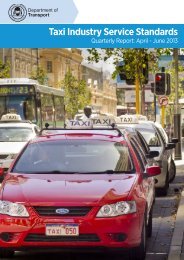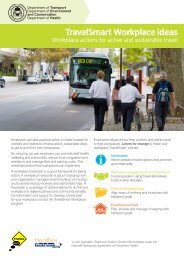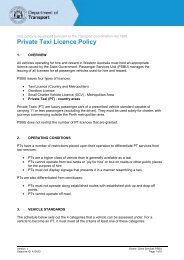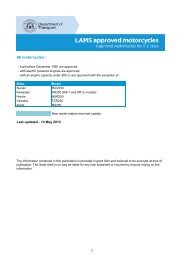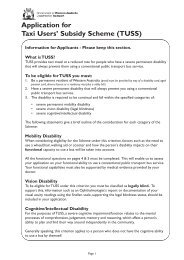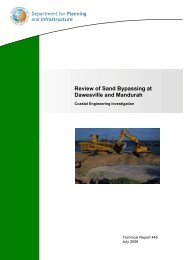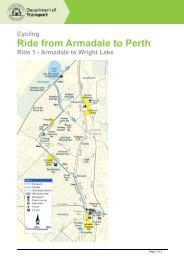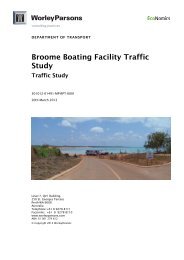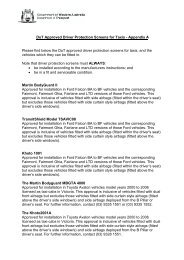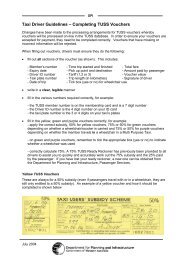Annual Report 2008-2009 - Department of Transport
Annual Report 2008-2009 - Department of Transport
Annual Report 2008-2009 - Department of Transport
Create successful ePaper yourself
Turn your PDF publications into a flip-book with our unique Google optimized e-Paper software.
174<br />
Key Performance Indicators<br />
DPI Level Government Desired Outcome: Integration <strong>of</strong> land and transport systems that facilitates economic development<br />
Effectiveness Indicator: Proportion <strong>of</strong> zoned land in the metropolitan area that is 400 metres/1 kilometre from major<br />
transport systems<br />
The <strong>Department</strong>, through its land-planning role, determines the location <strong>of</strong> major transport routes, their suitability for a range <strong>of</strong> transport services and their<br />
proximity to urban areas. The term “major transport routes” includes all major roads and railway lines which buses and trains use as the main connecting<br />
corridors, but excludes minor suburban roads.<br />
Convenient access to major transport systems pays significant economic dividends through:<br />
• Facilitating commuting to industrial centres;<br />
• Linking consumers to products and services;<br />
• Enabling the efficient transport <strong>of</strong> freight;<br />
• Reducing costs associated with road trauma; and<br />
• Reducing private usage road infrastructure costs.<br />
Enabling ease <strong>of</strong> access to major public transport centres also allows development to occur sustainably through reduced greenhouse gases and greater reliance on<br />
walking as a modal choice. In this context, major transport systems are primary regional roads, other regional roads and railway stations as defined in the Regional<br />
Scheme.<br />
Where the proportion <strong>of</strong> zoned land that meets the international benchmark <strong>of</strong> 400 metres from major transport systems is trending upwards or remains constant,<br />
the <strong>Department</strong> demonstrates achievement <strong>of</strong> land and transport integration.<br />
The indicators are calculated from Town Planning Scheme information extracted using the Geographic Information System (GIS) 8 . They represent percentages <strong>of</strong><br />
land for selected residential density codes (R-Code) proximity to major transport routes. The figures are for the Perth Metropolitan area only.<br />
8 The GIS is a spatial database consisting <strong>of</strong> mapping characteristics information and coordinates.



